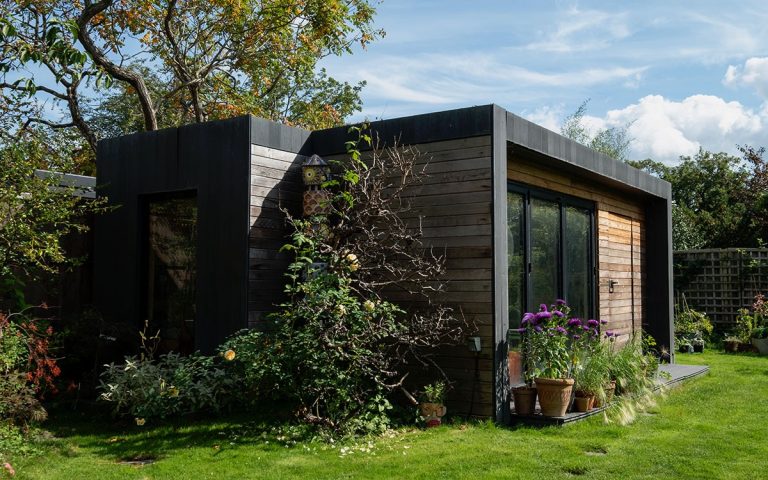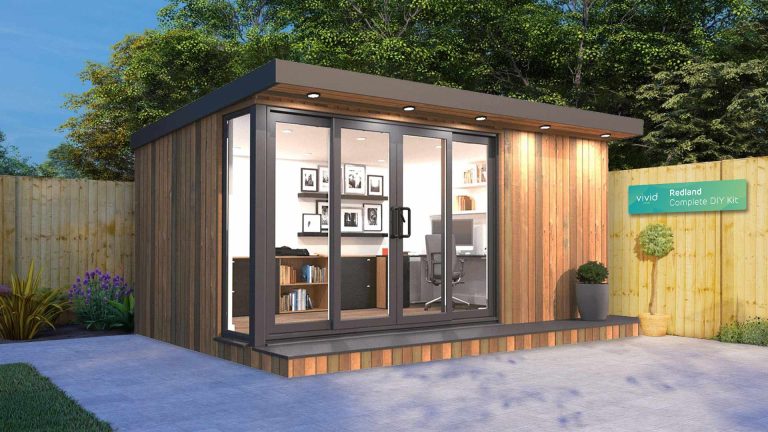Understanding the Importance of Your Garden Room Insulation
Insulation is crucial for maintaining a stable internal temperature, regardless of external weather conditions. In the context of garden rooms, which are often separate from the main house, effective insulation can make the difference between a usable space and one that is too hot in summer or too cold in winter.
Types of Garden Room Insulation Materials
Several types of insulation materials are available, each with its own benefits and applications. Here, we will discuss some of the most commonly used materials in garden room insulation.
1. Fiberglass Insulation:
Fiberglass is a widely used insulation material known for its excellent thermal performance and affordability. It is made from fine glass fibers and is available in batts, rolls, and loose-fill forms. Fiberglass is effective at reducing heat transfer and is relatively easy to install. However, it must be handled carefully to avoid skin irritation and respiratory issues.
2. Rigid Foam Insulation:
Rigid foam insulation comes in panels of varying thicknesses and is made from materials like polystyrene, polyisocyanurate, and polyurethane. It offers high R-values (a measure of insulation’s thermal resistance) and is particularly effective at preventing heat loss. Rigid foam panels can be used for walls, floors, and roofs, providing a continuous insulation barrier.
3. Spray Foam Insulation:
Spray foam insulation is applied as a liquid that expands into a foam, filling gaps and creating an airtight seal. It provides excellent thermal resistance and can help reduce air infiltration, making it highly effective for garden rooms. There are two types: open-cell and closed-cell. Closed-cell foam has a higher R-value and acts as a vapor barrier, while open-cell foam is more flexible and allows for some moisture permeability.
4. Sheep’s Wool Insulation:
Sheep’s wool is an eco-friendly insulation material that offers good thermal performance and natural moisture regulation. It is breathable, non-toxic, and has a low environmental impact. Sheep’s wool insulation can be used in walls, floors, and roofs and is particularly suitable for those looking for sustainable building solutions.
5. Reflective Insulation:
Reflective insulation, also known as radiant barrier insulation, consists of a reflective foil layer that reduces heat transfer by reflecting radiant heat away from the living space. It is often used in conjunction with other insulation materials to enhance thermal performance, especially in roofs and walls exposed to direct sunlight.
Insulating Different Parts of a Garden Room
To achieve optimal insulation, it is essential to insulate all parts of the garden room: walls, floors, roofs, and windows. Each area requires specific insulation techniques and materials.
1. Wall Insulation:
Insulating the walls of your garden room is crucial for maintaining a stable internal temperature. Depending on the construction of the garden room, you may use batt or roll insulation, rigid foam panels, or spray foam. It is important to ensure that the insulation fits snugly between the studs and that any gaps or voids are filled to prevent thermal bridging.
2. Floor Insulation:
Floors can be a significant source of heat loss, especially if the garden room is built on a concrete slab. Rigid foam insulation or spray foam can be used to insulate the floor. In raised garden rooms, fiberglass batts or rigid foam boards can be installed between the floor joists to provide effective insulation.
3. Roof Insulation:
The roof is another critical area to insulate, as it is exposed to direct sunlight and weather conditions. Rigid foam panels, spray foam, or reflective insulation are commonly used for roof insulation. Ensuring proper ventilation is also important to prevent moisture buildup and maintain the effectiveness of the insulation.
4. Window and Door Insulation:
Windows and doors are potential weak points in the insulation envelope. Double or triple-glazed windows with low-emissivity (Low-E) coatings can significantly reduce heat transfer. Weatherstripping and proper sealing around windows and doors are essential to minimize drafts and improve thermal performance.
Benefits of Proper Garden Room Insulation
Investing in high-quality insulation for your garden room offers numerous benefits, including:
1. Enhanced Comfort:
Proper insulation ensures that your garden room remains comfortable throughout the year, providing a pleasant environment regardless of the weather outside.
2. Energy Efficiency:
Insulation helps reduce the amount of energy needed to heat or cool your garden room, leading to lower energy bills and a reduced carbon footprint.
3. Noise Reduction:
Insulation materials can also help dampen sound, making your garden room a quieter and more peaceful space.
4. Moisture Control:
Effective insulation helps prevent condensation and moisture buildup, reducing the risk of mold and mildew, which can damage the structure and affect indoor air quality.
5. Increased Property Value:
A well-insulated garden room can add value to your property by providing a functional and energy-efficient additional living space.
Considerations for Garden Room Insulation Installation
When planning the insulation for your garden room, several factors need to be considered to ensure optimal performance and longevity.
1. Climate:
The local climate plays a significant role in determining the type and amount of insulation needed. In colder climates, higher R-values are required to keep the space warm, while in warmer climates, reflective insulation may be more beneficial.
2. Building Regulations:
Ensure that your insulation plan complies with local building regulations and standards. This may include specific requirements for insulation materials, installation methods, and overall thermal performance.
3. Vapor Barriers:
In some cases, a vapor barrier may be necessary to prevent moisture from passing through the insulation and causing condensation. The need for a vapor barrier depends on the climate and the type of insulation used.
4. Air Sealing:
Effective air sealing is essential to complement the insulation. Gaps, cracks, and openings in the building envelope should be sealed to prevent air leakage and enhance the overall thermal performance.
5. Professional Installation:
While some insulation materials can be installed by DIY enthusiasts, others may require professional installation to ensure optimal performance and safety. Spray foam insulation, in particular, should be applied by trained professionals.
Garden Room Insulation Maintenance and Upgrades
Over time, insulation can settle, degrade, or become less effective. Regular maintenance and periodic upgrades can help maintain the performance of your garden room insulation.
1. Inspect Regularly:
Conduct regular inspections of your garden room’s insulation to check for signs of wear, damage, or moisture infiltration. Address any issues promptly to prevent further damage.
2. Upgrade When Necessary:
If you find that your insulation is no longer performing effectively, consider upgrading to newer, more efficient materials. Advances in insulation technology can provide better thermal performance and energy efficiency.
3. Combine Insulation with Other Energy-Saving Measures:
Enhance the effectiveness of your insulation by combining it with other energy-saving measures, such as energy-efficient windows, solar panels, and smart thermostats.
Insulating your garden room is a vital step in creating a comfortable, energy-efficient, and durable space. By choosing the right materials and installation methods, you can enjoy the benefits of a well-insulated garden room, including enhanced comfort, lower energy bills, and increased property value. Whether you are building a new garden room or upgrading an existing one, investing in high-quality insulation is a decision that will pay off in the long run.







